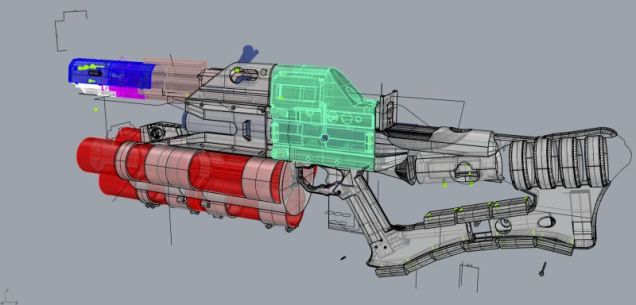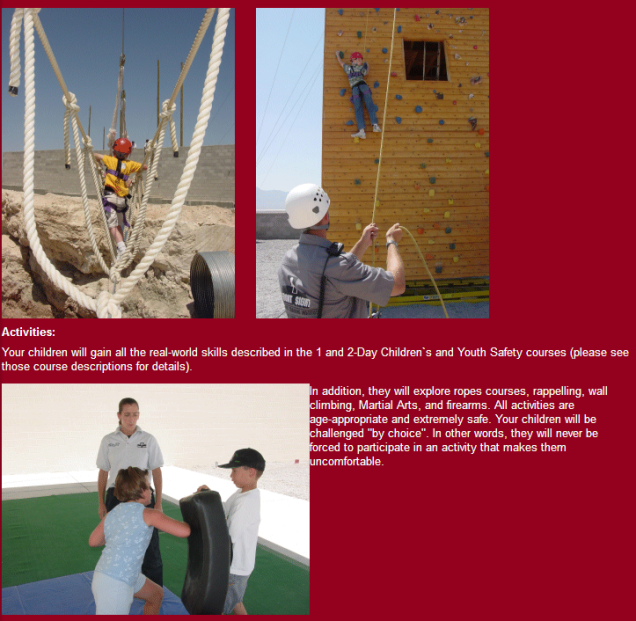Hunting is About Far More than Killing Game Animals
Hunting teaches children lessons that would probably not otherwise be learned for decades — if ever. While hunting, children are exposed to real world realities of predators and prey, planning and self discipline, and human to human teamwork.
Not every child will have the temperament to kill game animals. But they can learn most of the lessons of the hunt from observing and learning the painstaking preparations and hunting/stalking techniques which good hunters utilise.

Here is a short list of benefits from teaching children to hunt, for both family and child:
- One of the best things about teaching your child to hunt is the bonding time it gives the two of you. In today’s world where parents and children are often going in two different directions and have little time together, hunting gives you something to do together that can leave lasting memories.
- You taking your son or daughter into the woods with you carries on that family tradition, as you teach them the same skills that were taught to you, your parents or your grandparents.
- Teach them about harvesting only what they need and the balance of taking and giving. Explain the role of hunters in conservation and what we can do to ensure land and animals will still be available for their children when the time comes.
- By taking them hunting and getting them involved, you’ll not only be teaching them skills and sport, but you’ll help keep hunting alive.
- In a world where everything moves so fast and needs to be done so quickly, teaching your child to hunt can help them connect to the outdoors and teach them to slow down and enjoy simple moments in nature.
- By taking your children with you hunting, you can help promote a physically fit lifestyle and show them alternatives to simply hitting the gym.
- From discipline, to patience, to endurance, to learning to deal with disappointment, hunting helps develop skills in your children that will turn them into well-rounded adults.
- By teaching them proper hunting skills and sportsmen etiquette, you’ll be teaching them responsibility that can spread into other aspects of their lives.
- Watching the glee and excitement on your child’s face, knowing the work, patience and skill that all had to come together for that moment [first successful hunt] is priceless.
- Without proper knowledge, people panic and react quickly with a gun in their hand, not knowing what to do. By teaching your children to hunt, you’ll be teaching them skills that will teach them to respect guns, not fear them.
Children learn much more than is printed on the above list, simply by spending time in the safe company of parents and mentors, in the wild. But much of what children learn is nonverbal. Building strength of character under a range of challenges, is one of many nonverbal skills that pays large dividends later in life.
My daughter has been going with me since she was 7. Just this past deer season, she took her first deer. Up until then she just went and sat with me, and we would talk about everything under the moon. Teaching her about the outdoors and the importance of hunting are and were very special times, and the memories will last a lifetime. Just her being there with me was satisfying, but when she said she actually wanted to hunt, that took it to a whole new level of enjoyment. __ How to Teach Kids Hunting
Not Every Child is Cut Out for Hunting
Respect for the Wild and Wildlife is Crucial for a Budding Hunter
Nature is neither cruel nor benign. It simply is, and it doesn’t care what we think about it.
If your boy shouts, “Wow, I killed him!” or something like that, there is nothing wrong with him–he is just a boy. But he should understand that what he just killed wanted to live as badly as he does, and that he should feel sorrow as well as triumph. Other children will not relish death. If they kill, they will likely be saddened by it. This is natural too. Some youngsters are horrified by death and by the prospect of causing it. They are not meant to be hunters.
Make it clear to your kids that if they are not willing to give their all to becoming competent with gun or bow, they have no business afield. Explain to them also that if they hunt enough, they are eventually going to wound something, and it is going to escape to suffer. It may take two seasons for this to happen, or 50, but it is going to happen. All they can do is work at becoming as skilled as possible and hope it doesn’t. __ Teaching Your Child to Kill
Learning the Skills Without Killing
Just as a master fisherman can practise “catch and release” methods without killing the fish, so can skilled hunters be satisfied with nothing more than great wildlife photos taken inside the natural range of his chosen prey. In the same manner, very skilled birders must learn all the skills of a good hunter to catch his most elusive prey on film or video.
Dangerous Children will need to learn to kill as part of their training. If the child can not actually bring himself to make the kill, he will have chosen a different branch in the road of Dangerous Child training — which will probably involve less training in the violent arts than most DCs obtain.
Here is another list of benefits to youth learning to hunt:
Self-reliance: When children know how to hunt, they’ll always have a way to feed themselves, even if the unthinkable happens. They will not be stuck, relying on others to obtain food.
Food cycle: When kids learn to hunt, they gain an understanding of the food cycle. Without hunting, many children never connect the meat on their dinner plate to a living, breathing animal.
Love of the outdoors: If hunting does anything for a child, it instills a love of outdoors and a wonder at the majesty of nature. It teaches them to respect and appreciate the woods, water, and fields.
Rite of passage: For many hunting families, learning to hunt is a rite of passage. It may be the first time a child’s allowed at hunting camp during rifle season or that he has his own hunting gear. It’s an easy way to show a child you recognize he’s growing up and ready for more responsibility.
Cost savings: Although there’s a start-up cost and a yearly license fee, eating meat you harvest through hunting is an affordable way to eat healthier and save money.
Bonding: When you’re teaching children to hunt, it’s more about being together than hunting. You’re building memories, enjoying days spent together, and having experiences that can’t be found within city limits.
Health benefits: Hunting gets you outdoors and spending time in nature does great things for both your body and mind. It’s known to reduce stress, decrease blood pressure, and lead to more mindfulness.
Fitness and exercise: While you don’t have to be an Olympic athlete to enjoy hunting, you do have to be relatively physically fit. You have to walk distances, climb through brush and up mountains, and drag large game with nothing but a rope. Getting children involved in hunting shows them the importance of staying fit and creates a fun way to exercise.
Food safety: When it comes to what’s in commercial meat, it’s scary. Artificial preservatives, hormones, and antibiotics just top the list. But when children provide themselves with meat from a hunting harvest, they’re getting nothing but naturally fed meat.
Life skills: Hunting is more than sport; it’s a lesson in life. It helps youth develop character strengths such as discipline, patience, confidence, and endurance. It also teaches children how to deal with disappointment and move on to try again.
Unplugged: In this high-tech world, children are constantly plugged in. At school, they read on tablets. At home, it’s virtual reality games, and at the mall, it’s smart phones and iPods. Hunting gives children an escape from electronics and having to be in the know every minute of every day. It allows kids to unplug and just be.
Hunting is Good Training in Situational Awareness
The art of stalking and making a kill requires a heightened awareness of yourself and the environment around you. A hunter that is unaware of his surrounding may end up being the prey of a more deadly predator than himself. Or he may suffer a serious accident that was completely unnecessary.

http://www.jantoo.com/cartoons/keywords/hunting-trip
As the child grows older, he learns that the world holds a lot more dangers than he might have been told about as a child. Recent vicious attacks by leftists against peaceful political rallies and public speakers reveals a hidden hostility and violence that dwells covertly inside persons of all societies and all classes. Journalists within the news and entertainment medias are beginning to display much of this previously hidden viciousness when pushed out of their ideological comfort zones.
It is not enough these days to simply avoid known danger zones and “no-go” areas. Trouble can follow you to your own front door, and beyond. Situational awareness, mastery of hunting skills, and physical fitness combined with quick reaction training are indispensible.







